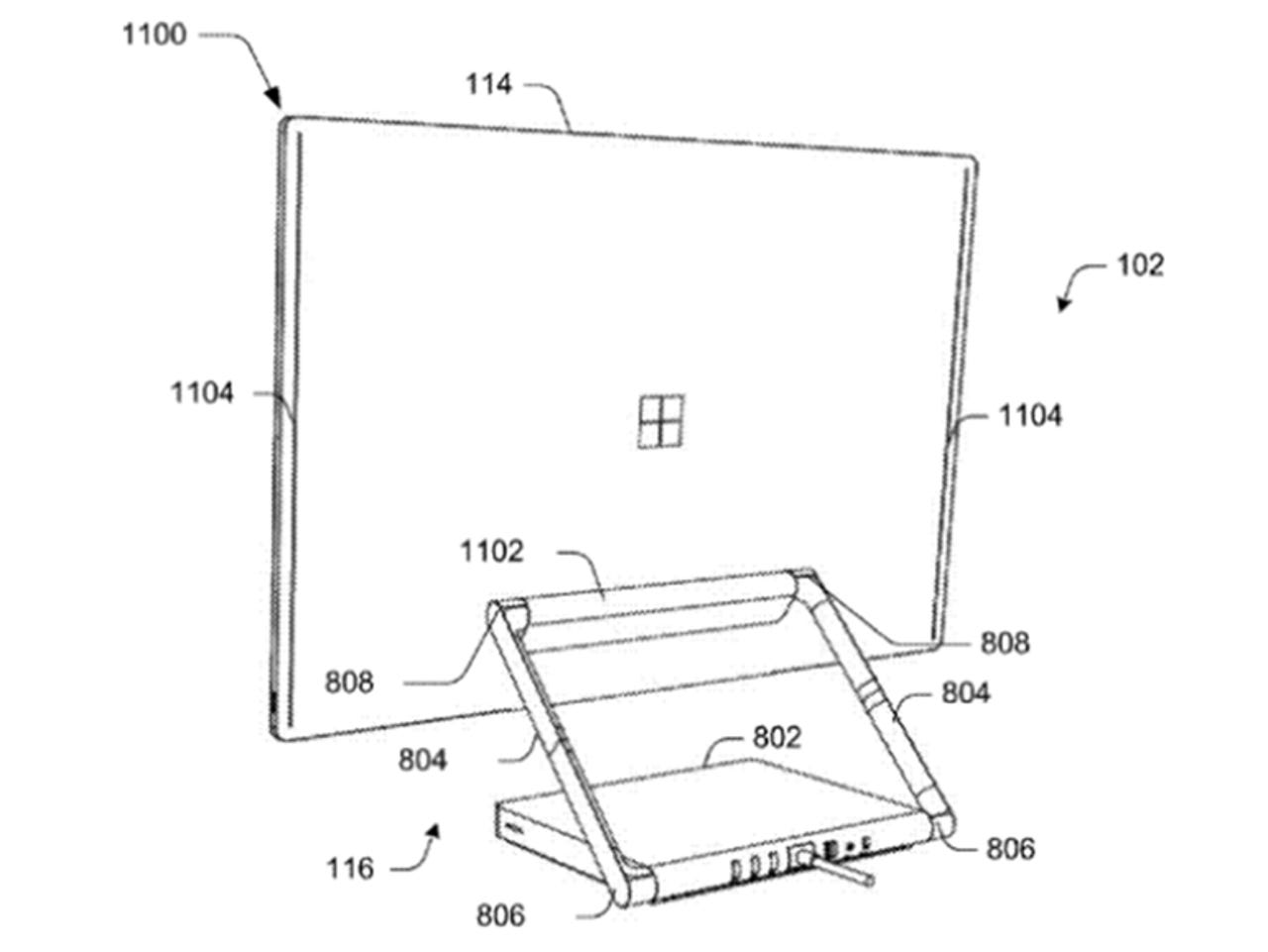Is this Microsoft's PC answer to Google's modular Project Ara phone?


The new patent shows Microsoft is still keen on the idea of easily-constructed modular hardware.
Wouldn't it be great if you could just snap different components together and build your own dream PC? Microsoft thinks so and in a new patent details a number of ways it could create such a platform.
The new patent, which comes from one of Microsoft's Surface designers, shows the company is still keen on the concept of easily-constructed modular hardware.
Even before Microsoft acquired Nokia, and before Google went public with Project Ara, Microsoft had filed a patent for a modular design slider phone built from components that could function independently or as part of the phone.
In the new patent, granted earlier this month, Microsoft's describes a rationale for modular hardware that addresses similar problems to the ones Google thought Project Ara could answer.
Besides enabling greater customization, modular hardware could help minimize waste by allowing consumers to upgrade components in line with technological advances, rather than having to replace the entire phone, say, because the camera or processor was outdated.
In Microsoft's view, its modular design could address the ever-increasing rate at which functionality is made available to computing devices.
"Conventional techniques utilized to make this functionality available to users have typically relied on replacement of the computing device as a whole, which could be expensive and thus limit access of users to this ever-increasing functionality," Microsoft notes.
One detail that makes the patent more interesting is that one of its authors is Tim Escolin, a senior designer on Microsoft's Surface devices and accessories team, as noted by Venture Beat.
So it's unsurprising to see a Surface-like tablet feature in the patent as the display component in the modular set-up. It would be connected to a click-on base module, consisting of a stackable arrangement that would allow users to swap out components, such as a core and graphics processing systems and memory.
Microsoft envisages the different modules would be held together magnetically or with a series of mechanical latches, supported by "protrusions and cavities" that would allow the user to "drop in" a new component into the one of the housings.
But the patent also alludes to the potential use of Microsoft's other hardware projects, such as Kinect and its upcoming HoloLens headset.
As Microsoft notes, one modular component "may be configured as an output device, such as speakers, a projector, a holographic projector". Also among the modular mix is a removable battery that can be used to power the display or any other connected device.
Needless to say, the patent doesn't necessarily mean Microsoft will build the technology. And Google's challenges with building Project Ara demonstrate that the modular dream isn't easy to achieve.
The new patent comes from one of Microsoft's Surface designers.
More on Microsoft
- Microsoft's latest Windows 10 device: It's the $200 5-inch Lumia 650
- Don't want Windows 10? No problem, upgrade to Windows 3.1 instead
- Microsoft bringing more bloatware to Android
- Porting an iOS app to Windows 10 can take as little as 5 minutes
- When it comes to Windows 10 privacy, don't trust amateur analysts
- Microsoft cuts 'dozens' more employees with its mobile unit: Report
- Acer to preload Microsoft apps, services on its Android mobile devices